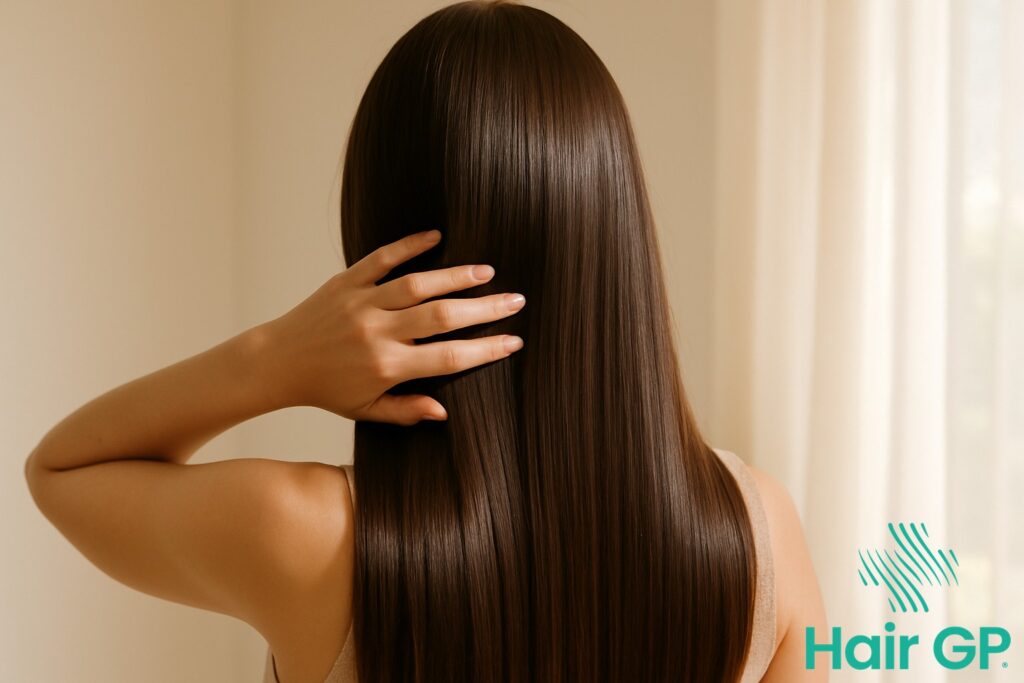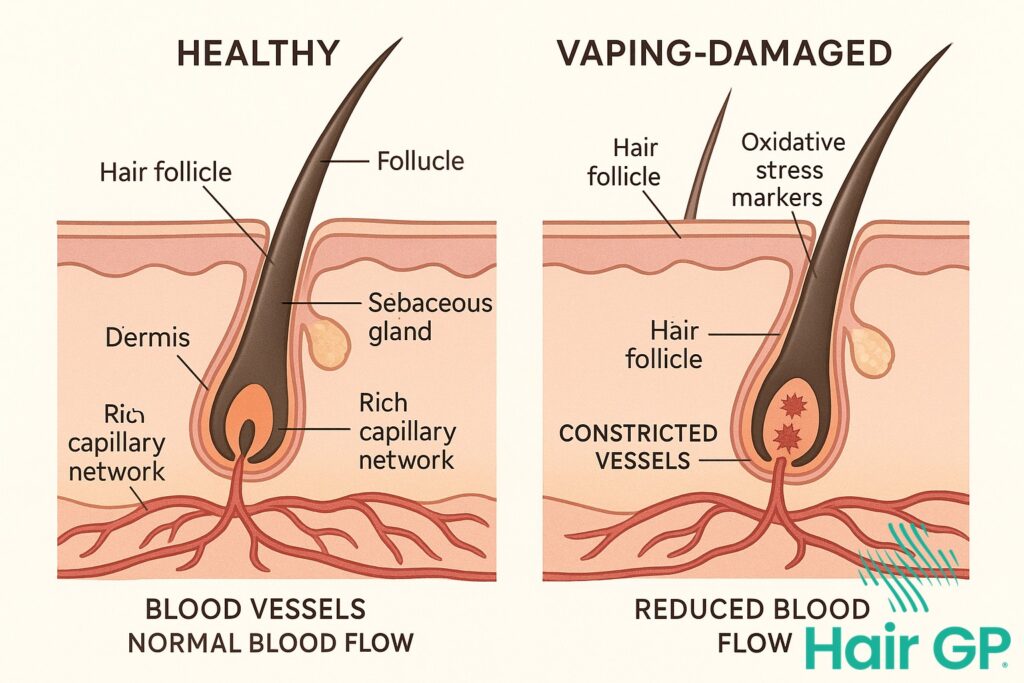Introduction
If you’ve been trying to grow your hair for months or even years, only to find it perpetually stuck at shoulder length, you’re not alone. Many people experience the frustrating phenomenon where their hair stopped growing at a certain point, leaving them wondering if they’ll ever achieve the flowing locks they desire. The good news is that your hair likely hasn’t actually stopped growing—something else might be preventing you from seeing the progress you’re working towards.
Understanding why your hair won’t grow past your shoulders requires looking at multiple factors that influence hair growth and retention. In most cases, hair that appears stuck at shoulder length is actually growing at a normal rate but experiencing breakage that matches or exceeds new growth, creating an illusion of stagnation. This can happen for various reasons, from genetics and nutrition to daily styling habits that compromise healthy hair.
Throughout this article, we’ll explore the science behind your hair’s growth patterns, including the natural cycles that determine how long each strand remains on your head. You’ll learn how to determine whether your hair is truly not growing or if breakage is the culprit, discover which nutritional factors support optimal growth, and identify care practices that might be sabotaging your length goals. We’ll also discuss when genetic factors come into play and help you recognise when it’s time to seek professional guidance. By understanding these elements, you’ll be better equipped to break through the shoulder-length plateau and achieve the hair length you’ve been dreaming of.
Key Takeaways – TL/DR
- Hair typically grows 0.5 inches per month, but breakage can mask actual growth
- Terminal length is genetically determined but rarely as short as shoulder length
- Most ‘growth plateaus’ are actually caused by breakage matching growth rate
- Proper nutrition, gentle handling, and regular trims promote retention of length
- Medical conditions affecting hair growth should be evaluated by professionals
Understanding Your Hair Growth Cycle
Understanding the hair growth cycle is crucial for distinguishing between normal hair behaviour and genuine growth problems. Your hair follicles undergo a continuous biological process that determines how long and how fast your hair grows, which varies from person to person.
The Three Phases of Hair Growth
The hair cycle consists of three distinct phases that every follicle experiences independently. The anagen phase is the active growth period, typically lasting between 2-7 years [1]. During this time, new hair forms and pushes through the scalp at a steady rate. The catagen phase follows as a brief transitional period lasting approximately 2-3 weeks, where growth ceases and the follicle begins to shrink. Finally, the telogen phase represents the resting period, lasting about 3 months before the hair naturally sheds and the cycle begins anew [1].
Normal Growth Rates and Expectations
The average person’s hair grows approximately 0.5 inches (1.25 cm) per month, translating to about 6 inches annually [2]. However, individual variations exist based on genetics, age, and overall health. Some people may experience slightly faster or slower growth rates, which is perfectly normal. Understanding these expectations helps you recognise whether your hair has genuinely stopped growing or if you’re simply experiencing the natural limitations of your personal hair growth cycle. Remember, each strand operates on its own timeline, ensuring continuous coverage whilst individual hairs complete their cycles.
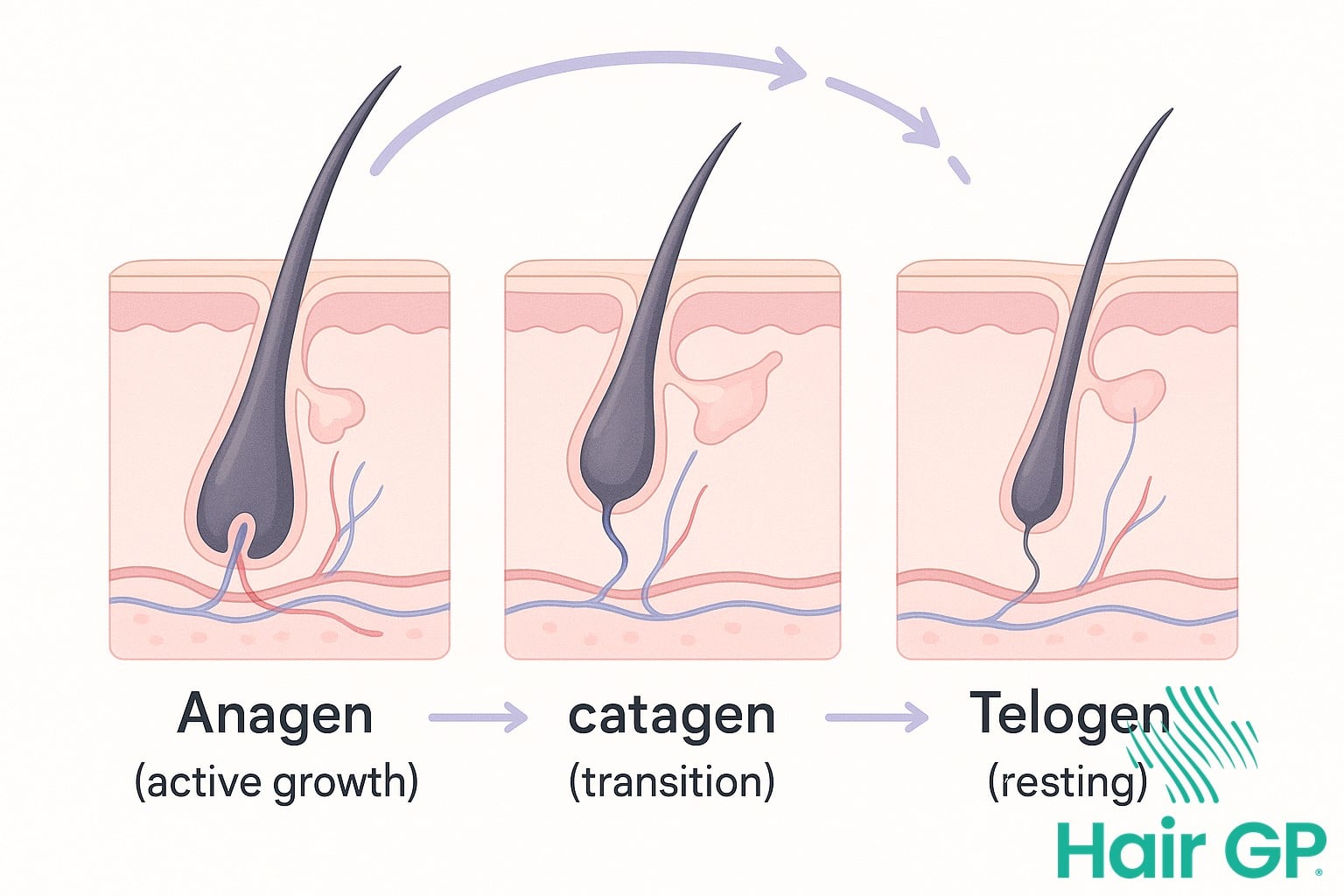
Is Your Hair Actually Not Growing?
Before assuming your hair stopped growing, it’s crucial to determine whether you’re experiencing true growth cessation or if breakage is masking your progress. In most cases, what appears to be stalled growth is actually hair breaking off at the same rate it grows. Your hair simply might be growing from the roots whilst simultaneously breaking at the ends, creating an illusion that growth has plateaued.
To track whether your hair is experiencing slow hair growth or if it genuinely stops growing, start documenting your progress systematically. Take monthly photos from multiple angles under consistent lighting, ensuring you capture the same sections of hair each time. Measure specific strands from root to tip using a tape measure, recording the measurements in a hair journal. Pay particular attention to your roots—if you notice new growth appearing at the scalp every 4-6 weeks, your hair is indeed growing.
Another telling sign is the presence of baby hairs or shorter strands around your hairline and crown. These indicate active follicles producing new growth. If you colour your hair, root regrowth is perhaps the most obvious indicator that your follicles are functioning normally, typically showing 1-2 centimetres of new hair monthly.
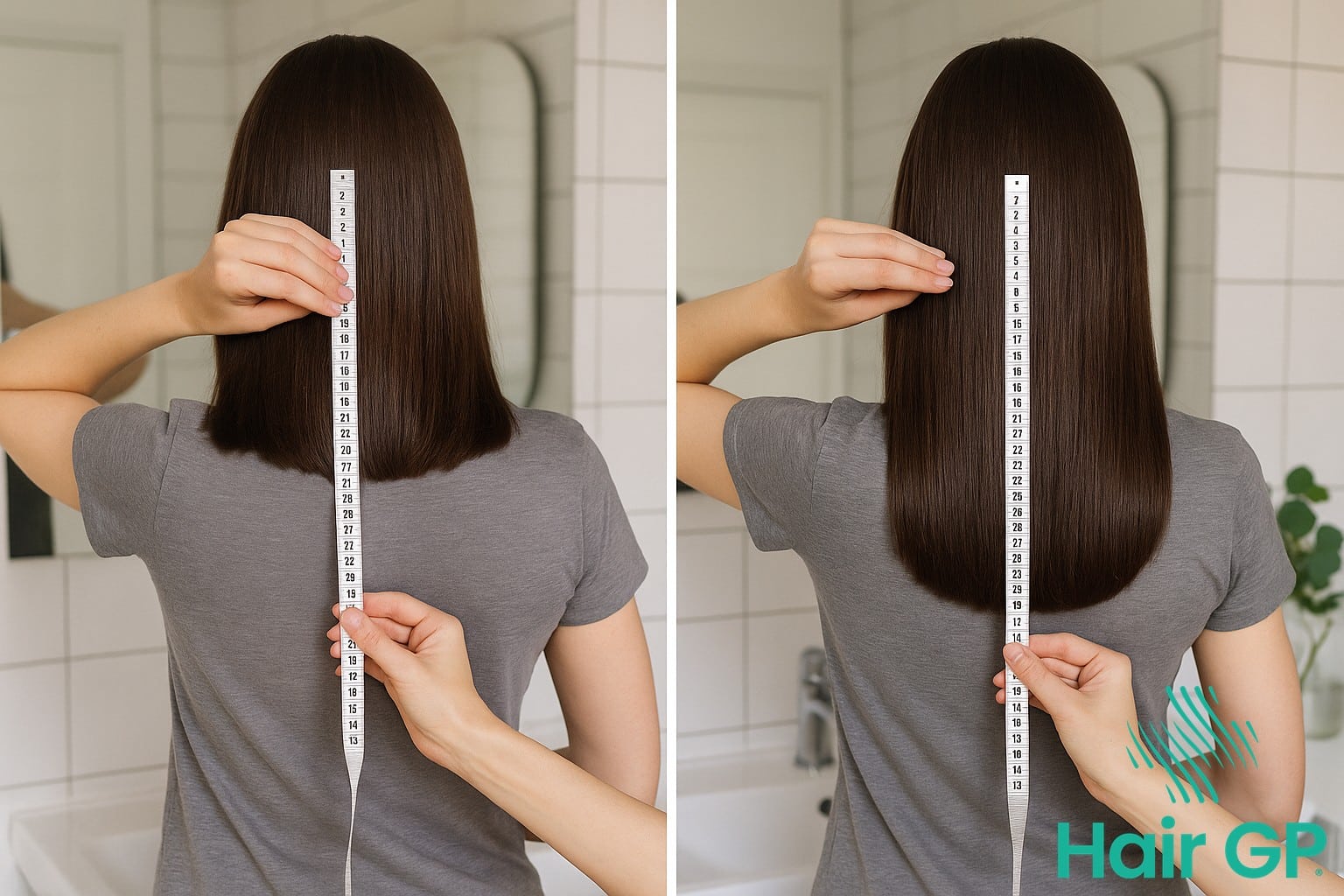
The Breakage Problem: When Growth Meets Damage
Hair breakage often creates a frustrating illusion where your hair appears stuck at the same length despite months of growth. This occurs when brittle hair breaks off at approximately the same rate as new growth emerges from the scalp, resulting in a perpetual plateau that many mistake for halted growth entirely.
Identifying Hair Breakage vs. Hair Loss
Understanding the difference between hair breakage and actual hair loss is crucial for addressing growth concerns. Hair breakage typically shows short pieces of varying lengths along the hair shaft, particularly concentrated at the hair ends where damage accumulates. These broken fragments lack the small white bulb found at the root of naturally shed hairs. In contrast, hair loss involves the entire strand falling from the follicle, complete with its root bulb intact.
The location of damage also differs significantly. Breakage predominantly affects the mid-lengths and ends, whilst hair loss occurs at the scalp level. If you notice split ends or see small hair pieces on your clothing and pillowcase rather than full-length strands, you’re likely dealing with breakage rather than true hair loss.
Common Causes of Hair Breakage
Mechanical damage ranks amongst the leading causes of hair breakage, including aggressive brushing, tight hairstyles, and rough towel-drying. Chemical processing such as bleaching, perming, and excessive heat styling weakens the hair’s protein structure, making it more prone to snapping. Environmental factors like sun exposure, chlorine, and harsh weather conditions can also leave hair brittle and vulnerable.
Improper detangling techniques cause significant damage, particularly when hair is wet and most fragile. Leaving split ends untreated allows damage to travel up the hair shaft, whilst failing to remove split ends through regular trims perpetuates the breakage cycle, preventing visible length retention despite continuous growth.
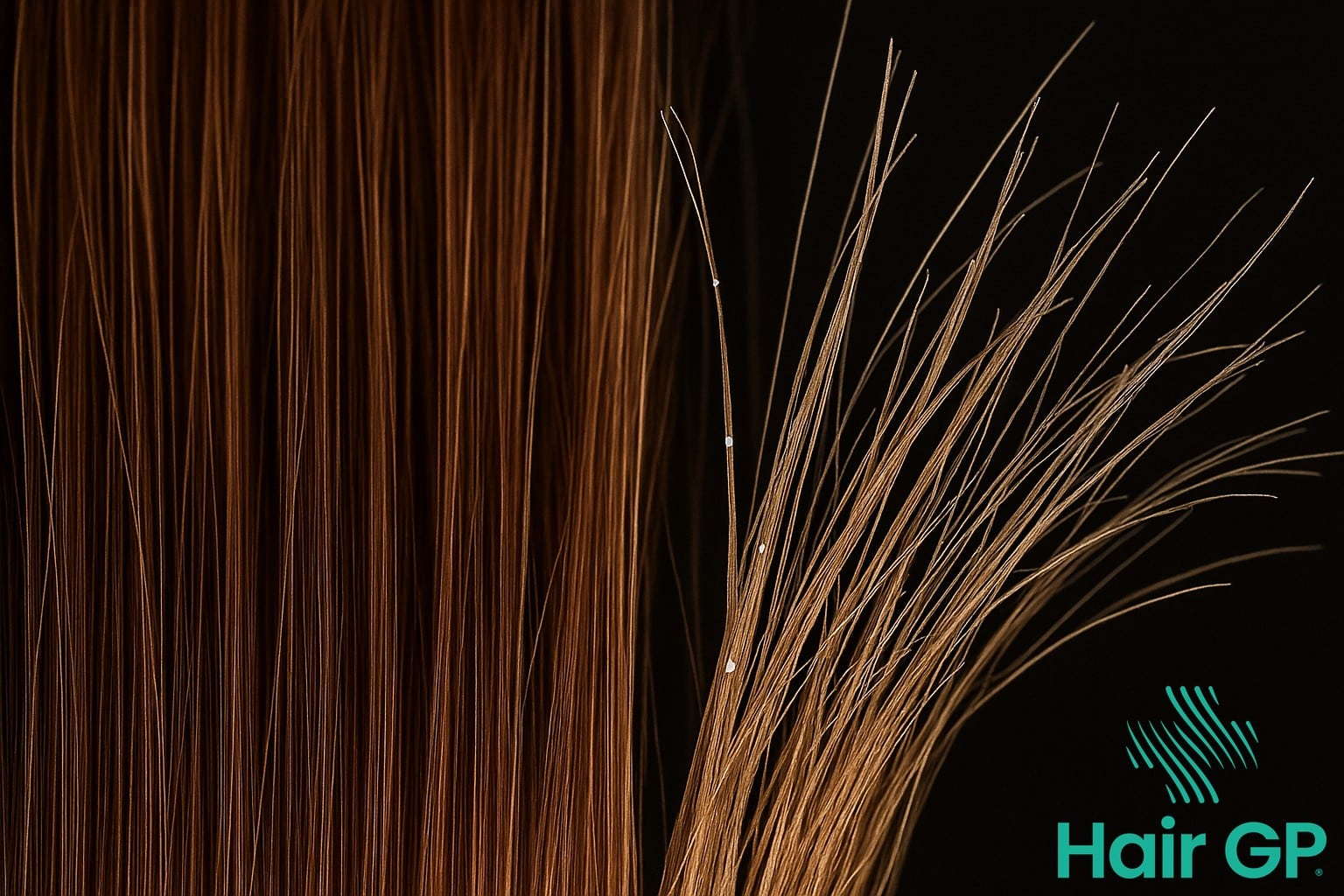
Genetics and Terminal Length: Understanding Your Hair’s Potential
Your genetic makeup fundamentally determines how long your hair grows before naturally shedding. The anagen phase duration, which varies significantly between individuals, is primarily controlled by inherited factors that regulate follicle activity [3]. This genetic programming explains why some people effortlessly achieve waist-length hair whilst others struggle to grow hair past their shoulders, regardless of their hair type or care routine.
Research demonstrates that genes influence not only the growth phase duration but also the quality and structure of the hair shaft itself. The average person’s hair grows approximately 15 centimetres annually, but genetic variations can alter this rate substantially [2]. These inherited differences affect follicle size, growth speed, and the maximum achievable length before the telogen phase initiates.
Contrary to popular belief, genetics don’t impose absolute limits preventing anyone from achieving their desired length. Rather, they establish parameters within which proper care, nutrition, and hair health practices can optimise growth. Understanding your genetic predisposition helps set realistic expectations whilst recognising that environmental factors, overall health, and hair care practices can significantly influence whether you reach your hair’s full potential within its genetically determined framework.
Nutritional Factors Affecting Hair Growth
Proper nutrition forms the foundation for healthy hair growth, as hair follicles require a steady supply of essential nutrients to function optimally. When your diet lacks key vitamins and minerals, your body prioritises vital organs over hair production, potentially leading to slowed growth and increased breakage.
Essential Nutrients for Optimal Hair Growth
Hair consists primarily of keratin, a protein that requires adequate dietary protein intake to promote hair growth effectively. Research shows that protein malnutrition can lead to hair thinning and telogen effluvium [4]. Iron plays a crucial role in healthy hair development, as it helps red blood cells carry oxygen to hair follicles. B-vitamins, particularly biotin, support hair health by assisting in keratin production and cellular metabolism. Omega-3 fatty acids nourish the healthy scalp by reducing inflammation and providing essential oils that keep hair follicles functioning properly.
Signs Your Diet May Be Affecting Your Hair
Nutritional deficiencies often manifest through noticeable changes in hair quality and growth patterns. Increased shedding beyond the normal 50-100 strands daily may indicate inadequate protein or iron levels [5]. Slow growth rates, particularly when combined with brittle texture, suggest insufficient vitamin intake affecting the hair growth cycle. Dullness and lack of lustre frequently result from omega-3 deficiency, whilst a dry, flaky scalp may signal inadequate zinc or B-vitamin consumption. Recognising these symptoms early allows for dietary adjustments that support healthy hair from within.
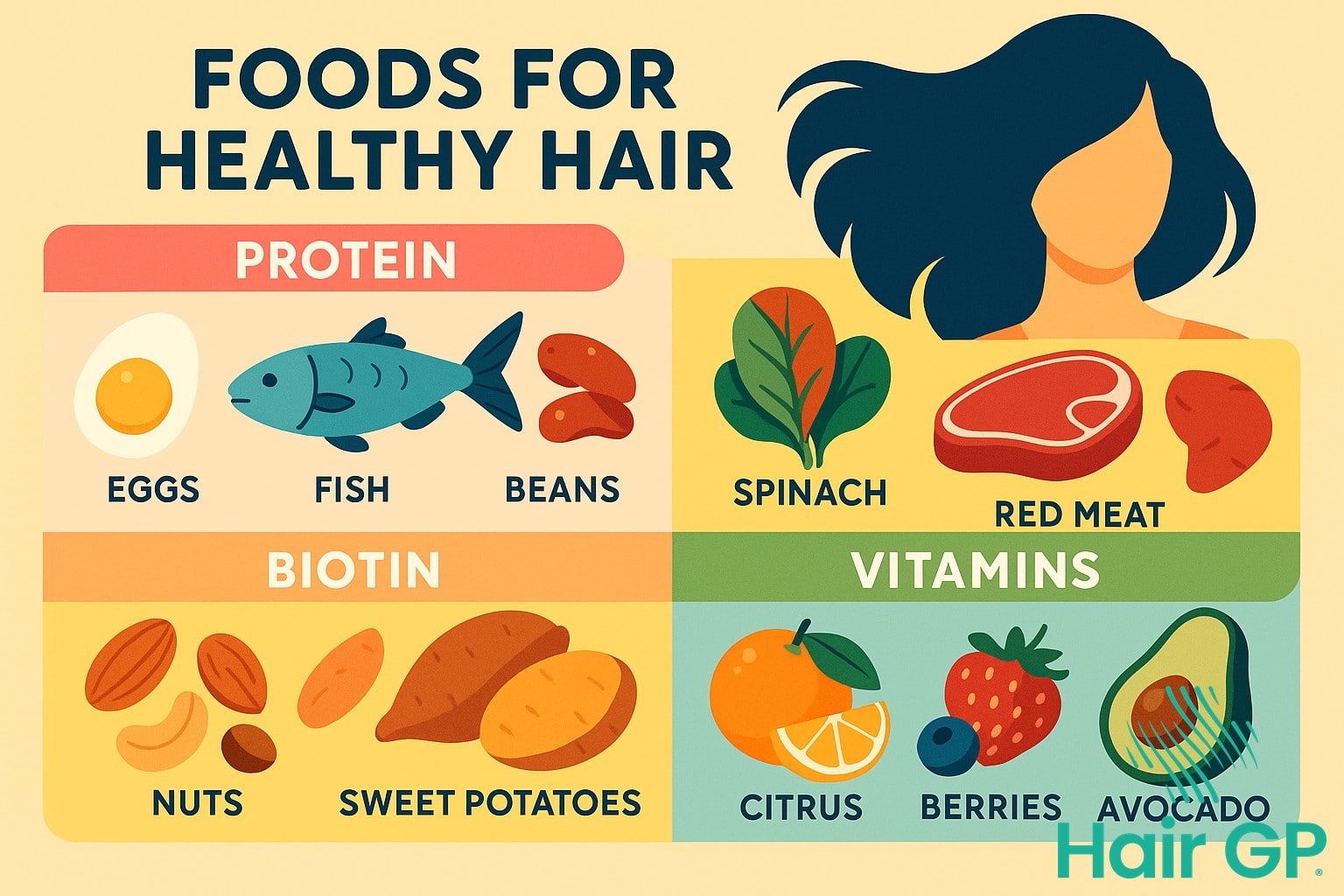
Hair Care Practices That May Be Holding You Back
Many well-intentioned hair care routines inadvertently sabotage length retention through damaging practices that weaken strands over time. Understanding which habits contribute to breakage and adjusting your hair care routine accordingly can dramatically improve your ability to maintain healthy, longer hair.
Heat Damage and Protective Styling
Excessive heat styling remains one of the most common culprits behind hair breakage. When using heat tools, keeping temperatures below 180°C (356°F) for fine hair and 200°C (392°F) for thicker textures helps minimise damage. Always apply a heat protectant before styling, as these hair products create a barrier between your strands and damaging temperatures.
Beyond temperature control, technique matters significantly. Quick, smooth passes with styling tools cause less damage than repeatedly going over the same section. Consider embracing low-manipulation protective styles like loose buns, braids, or twists that shield your ends whilst reducing daily styling stress.
However, even protective styles can backfire when executed improperly. Tight hairstyles that pull at the hairline or create tension along the scalp can lead to traction alopecia and breakage. Chemical treatments like relaxers, when overlapped or applied too frequently, weaken the hair structure and compromise length retention.
The key lies in finding balance within your hair routine. Alternate between heat styling and heat-free methods, ensure protective styles aren’t causing tension, and space out chemical treatments appropriately. Small adjustments to these common practices can make the difference between chronic breakage and successfully achieving your length goals.
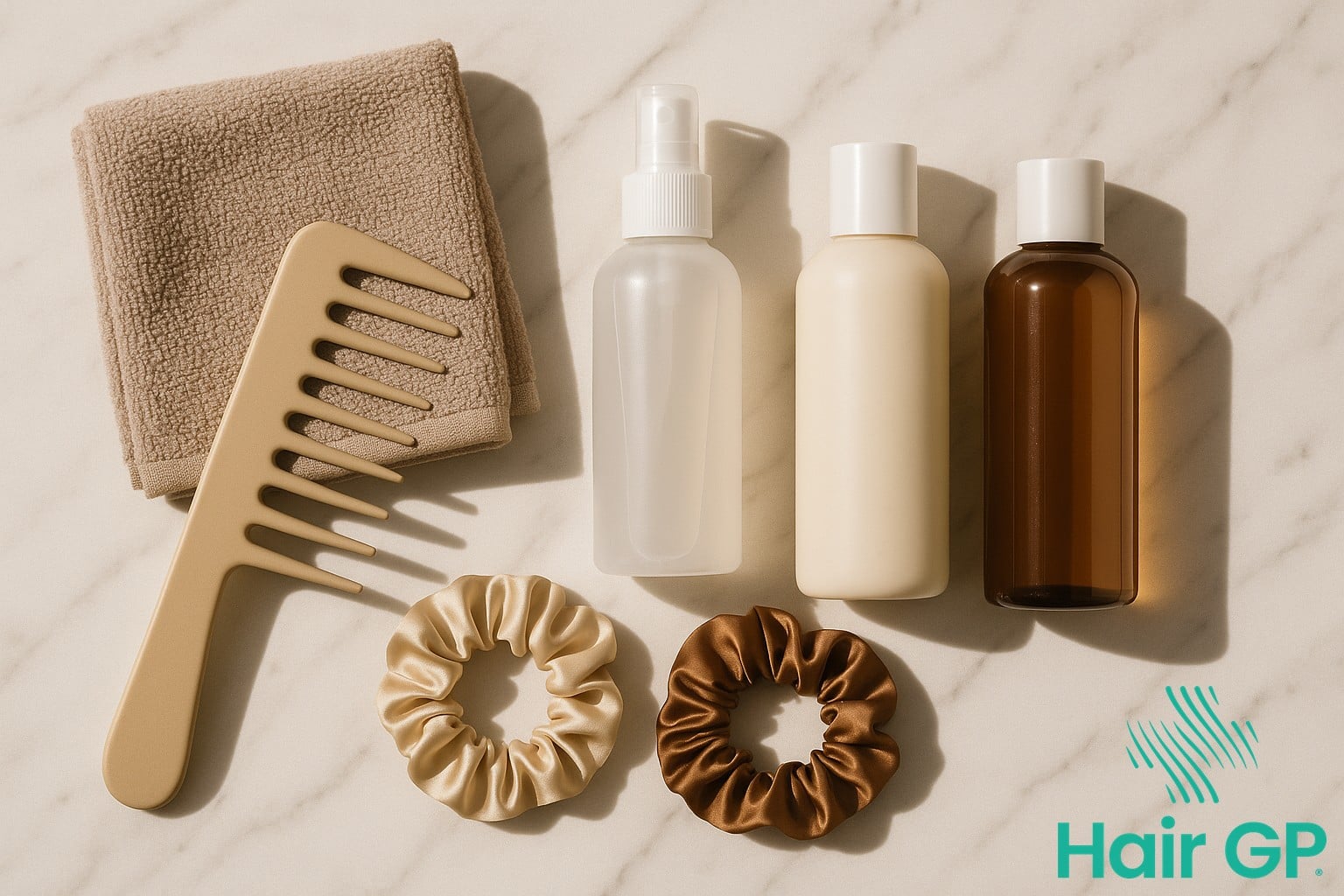
When to See a Professional About Hair Growth Concerns
Whilst occasional shedding is normal, certain signs indicate the need for professional evaluation. When hair falls out in clumps, leaves visible patches, or when you notice significant thinning across the scalp, it’s time to seek expert guidance. Your hairdresser may be the first to notice changes in hair density or texture during routine appointments, providing valuable early insight into potential concerns.
Several warning signs warrant immediate professional attention. Sudden or patchy hair loss, particularly when accompanied by scalp irritation, burning sensations, or visible inflammation, could indicate underlying medical conditions. Alopecia manifests in various forms, from small circular patches to widespread loss, and early intervention often prevents further hair loss. Additionally, hair loss accompanied by other symptoms such as fatigue, weight changes, or skin alterations suggests systemic health issues requiring medical investigation.
Professional consultations typically begin with comprehensive scalp examinations and detailed medical histories. Dermatologists may perform pull tests, examine hair samples under microscopy, or request blood tests to identify nutritional deficiencies or hormonal imbalances. Doctors that specialise in hair and scalp disorders, offer targeted treatments and personalised care plans. These experts provide evidence-based solutions whilst monitoring progress to ensure optimal outcomes for hair health restoration.
Conclusion
Achieving the long hair of your dreams requires understanding that most perceived plateaus aren’t due to halted hair growth, but rather ongoing breakage matching your growth rate. When hair won’t grow past your shoulders, it’s typically a sign to reassess your hair care routine rather than accept genetic limitations.
The path to healthy hair that can hair grow past shoulder length involves minimising mechanical damage, protecting strands from environmental stressors, and maintaining adequate nutrition. Small changes like switching to silk pillowcases, reducing heat styling frequency, and incorporating protective hairstyles can make remarkable differences in retention rates.
Remember that patience plays a crucial role in your journey. Hair typically grows 15 centimetres annually, meaning significant length changes take time. Focus on preserving the hair you’re growing rather than obsessing over growth speed. Regular trims to remove damaged ends, deep conditioning treatments, and gentle handling will help you break through apparent plateaus.
By addressing breakage-causing habits and implementing protective strategies, most people can successfully grow their hair well past their shoulders. Start evaluating your current practices today – your future self will thank you for the beautiful, lengthy results.
Frequently Asked Questions
With average growth of 6 inches per year and minimal breakage, growing hair from shoulders to mid-back (approximately 8-10 inches) typically takes 16-20 months. However, this varies based on individual growth rates and hair care practices.
While trimming doesn’t directly increase growth rate, regular trims (every 8-12 weeks) remove split ends before they travel up the hair shaft causing breakage. This helps you retain more length over time, creating the appearance of faster growth.
Shedding involves hairs falling from the root with a small white bulb attached, which is normal (50-100 hairs daily). Breakage shows no bulb and creates shorter pieces that snap off mid-shaft, indicating damage that prevents length retention.
While multivitamins can support healthy hair growth if you’re deficient, they won’t override genetics or fix breakage issues. Focus on a balanced diet and consult a healthcare provider before starting supplements.
References
- Hoover E, Alhajj M, Flores JL. Physiology, Hair. StatPearls [Internet]. 2021. PMID: 29763123
- Loussouarn G, Lozano I, Panhard S, Collaudin C, El Rawadi C, Genain G. Diversity in human hair growth, diameter, colour and shape. An in vivo study on young adults from 24 different ethnic groups observed in the five continents. Eur J Dermatol. 2016. PMID: 27019510
- Hillmer AM, Hanneken S, Ritzmann S, Becker T, Freudenberg J, Brockschmidt FF et al.. Genetic variation in the human androgen receptor gene is the major determinant of common early-onset androgenetic alopecia. Am J Hum Genet. 2005. PMID: 15902657
- Guo EL, Katta R. Diet and hair loss: effects of nutrient deficiency and supplement use. Dermatol Pract Concept. 2017. PMID: 28243487
- Rushton DH. Nutritional factors and hair loss. Clin Exp Dermatol. 2002. PMID: 12190640

